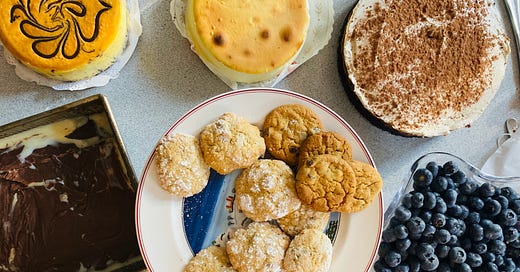So how was the pie? Confession I don't like pie—really I don't like pie crust—the filling I'm all for, as long as it doesn't touch the crust. But in all seriousness, I hope your Thanksgiving was lovely, whatever you ate and however you spent it.
I was walking around my parents’ neighborhood on Thursday afternoon and the light and laughter spilling out of…



